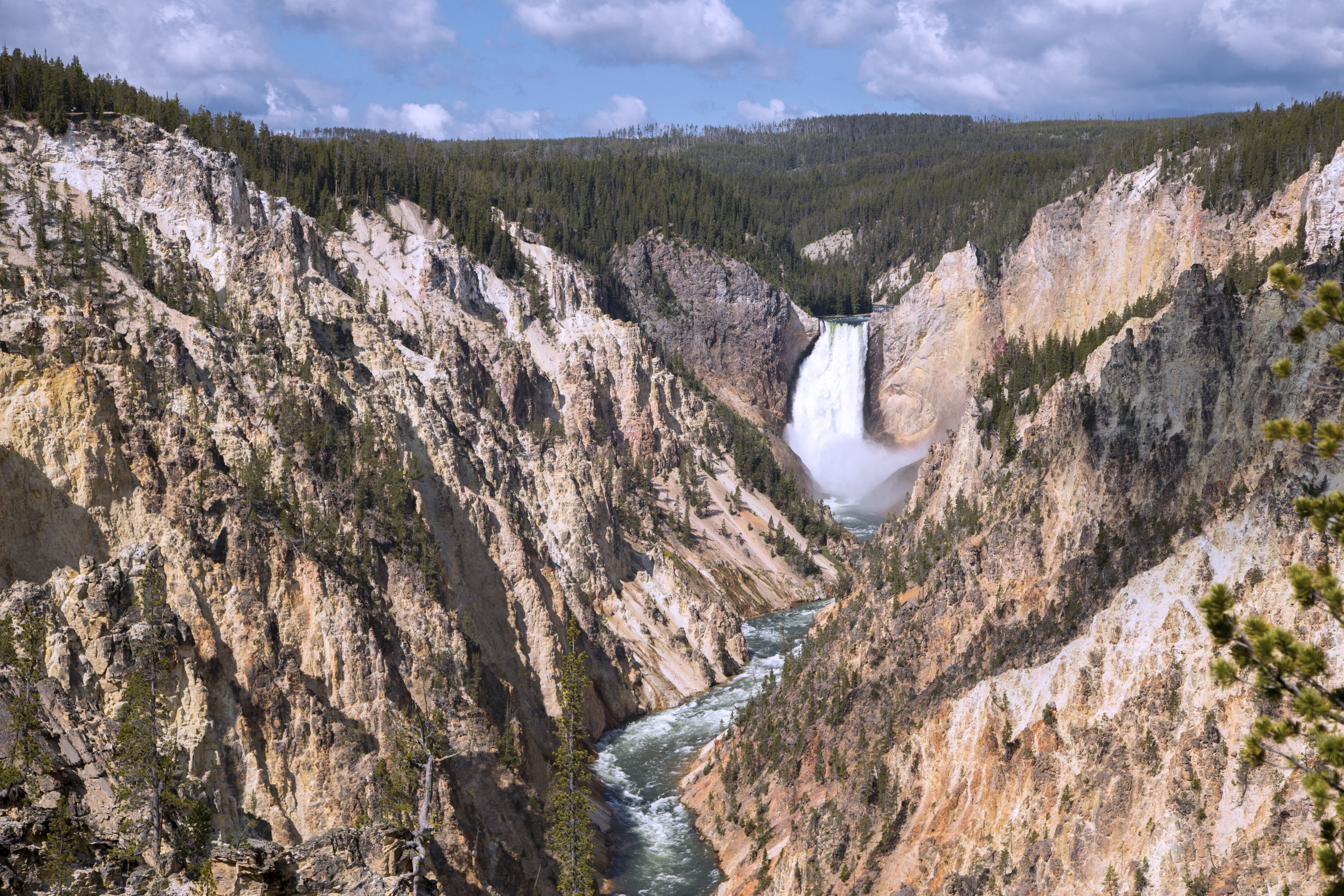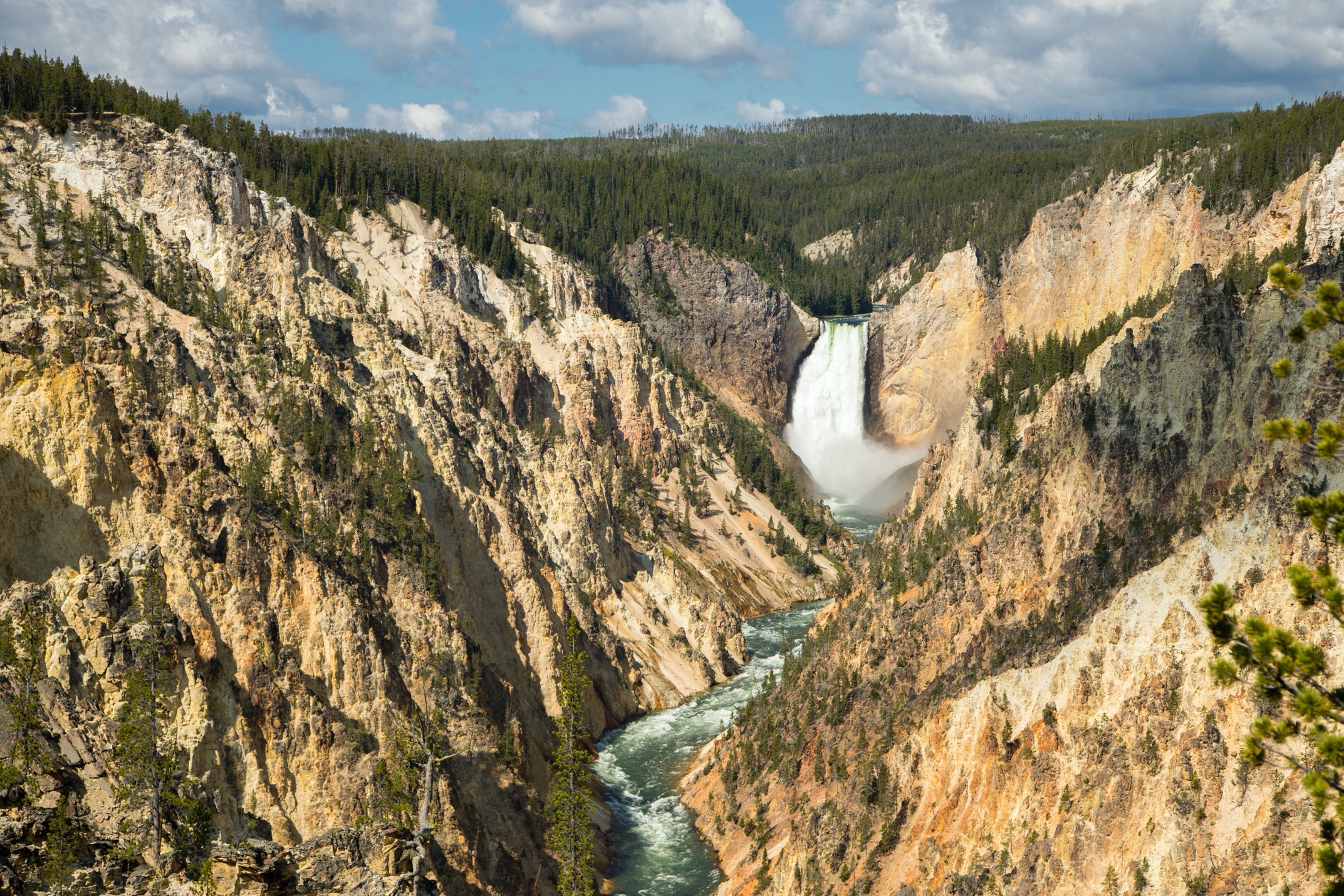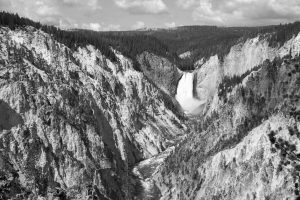
How to Get this Shot – Grand Canyon of Yellowstone
In the world of adventure and nature photography, capturing the most stunning destinations in all their glory is of prime importance. Whether it’s the extraordinary waterfalls of Costa Rica, the royal red tundra of the Arctic, or the vast forests of the Amazon rain forest, photographing the very essence of a wild place seems straightforward, but often requires some specific considerations and techniques.
Here we are talking about one of the grandest wild landscapes in North America, and the world’s very first national park—Yellowstone. And within this vast natural area exists one particular feature that you won’t want to miss—the waterfalls within the Grand Canyon of Yellowstone.
If you’re headed on a photo adventure in Yellowstone and have the Grand Canyon of Yellowstone on your itinerary, follow these steps to come away with some great shots of this spectacular scene.
- First, you’ll of course need to get in front of this majestic waterfall. Because of its location in the park, it’s best accessed if you are either staying in the park or plan on doing a full day drive through the park. Once there, you’ll have several different viewpoints, so plan on spending at least an hour here to experiment with different views and angles.
- Next, you’ll want to don your telephoto lens. That’s right…contrary to popular belief, some of the grandest landscape shots come from an unconventional landscape lens—your 70-200mm or even 100-400mm. Because the optimal view of the falls puts you considerably far away (although they are massive and endlessly impressive at any distance), you’ll want to zoom in a bit to frame your shot.
- Continuing on, you need to think about your ideal camera settings. To me, this is a classic landscape style photo, so a big f/number for maximum depth of field is key. Because light is usually plentiful, you usually aren’t limited by light. Thus, a low ISO and fast shutter speed are best. Typically I shoot something around f/8 or f/11 at 1/400th of a second and ISO 200. Depending on the time of day and the brightness of the sun, you will of course need to experiment a little with these settings. Or, you can set your camera to Aperture Priority mode and auto ISO, put on f/11 and let it decide the rest for you.
- You can also use this opportunity to experiment with different white balance settings. To no surprise, you’ll find that the stones here are indeed yellow (Yellowstone?). As a result, you may opt to either exaggerate this color a bit and shoot on a “cloudy” WB setting, or you may wish to dim it back a little and shoot on a “daylight” WB setting. Both are completely acceptable and encouraged. And again, it’s a wonderful venue to experiment with all WB settings to see what you like best. Below you can see what a daylight WB setting (akin to a daylight filter) does to the shot, followed by a cloudy WB setting.


- Composition is where perhaps most of your creative opportunities exists. Whether you choose to fill the frame with the rock walls, zoom out to include more of the canyon, or zoom all the way in and feature just one small piece of the waterfall and canyon is up to you. To me, time-providing, I would try all three! And I would also keep your wide-angle lens handy to experiment further with wide compositions, as they absolutely have a place here (although I still believe that a zoomed in telephoto shot is my first “go-to” arrangement here).
- Now it’s time to take, take, take photos! Take more, experiment, and think creatively about your composition, your white balance, and your angle on the falls. One additional way to think creatively is to “envision” the scene in black and white. Once you get home to your computer, you can desaturate the colors to create a unique “Ansel Adams” vision of this iconic wilderness.

And there you go—simple advice for a straightforward, but classic landscape photo opportunity. The great thing here is these steps are similar for most any big landscape feature in a wilderness setting.
The one thing that this scene doesn’t allow you to easily do is create a silky water effect, like other slower rivers may provide. The issue here is that the water is so fast and channeled into such a narrow current, the water is just too white to show that silky effect when slowing your shutter down.
Nevertheless, if you plan on photographing in America’s wilderness and the Yellowstone ecosystem, I wish you the very best—it’s great out there!
Cheers,

Court
2 Comments

Denise
February 10, 2022 at 7:32 pm

Court Whelan, Ph.D.
February 11, 2022 at 5:20 am
Lovely photos. Makes me want to visit there. I like the cloudy (more yellow) one the best.
Yellowstone is indeed a fantastic place! Thanks for reading!